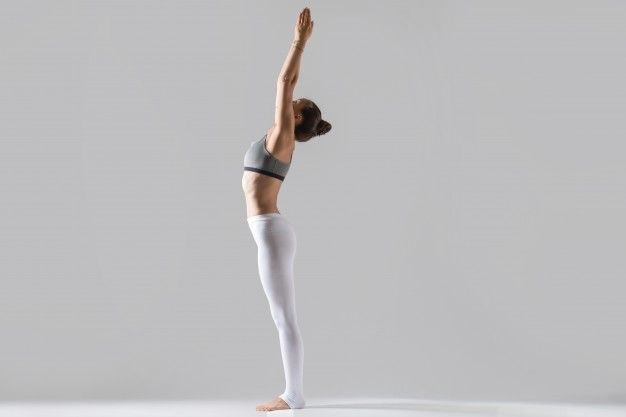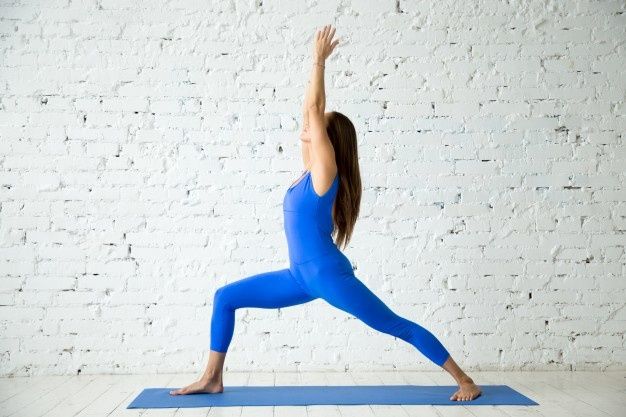Yoga has been healing for the mind, body, and soul, since the beginning of time now. And it has worked wonders in multitudes of cases involving both mental as well as physical disorders and diseases. There are yoga asanas for almost every other condition from yoga poses to relieve anxiety and getting rid of sleep problems, to yoga practices for migraines. And now, you can do yoga for a stroke too! Wonderful isn’t it! But before we learn more about the benefits of yoga for stroke patients, let’s take a look at some information about a stroke.
Stroke: Causes and Symptoms
A stroke is more or less a medical emergency wherein one’s brain tends to get damaged from the disturbance of its blood supply. There are 2 major causes of stroke, one of them being a blocked artery, which is also commonly known as ischemic stroke, and the other is known as hemorrhagic stroke wherein there is a leaking or a bursting blood vessel.
There is yet another type of stroke called transient ischemic attack, also considered to be a “mini-stroke”, majorly because it does not tend to cause any severely lasting symptoms. It usually occurs when someone has a temporary interruption of blood flow to their brain. The most commonly witnessed symptoms or warning signs of a stroke include:
- difficulty in speaking and understanding
- trouble walking and/or loss of balance
- a sudden onset of weakness or numbness on only one side of the body
- a sudden difficulty seeing and/or dizziness
- an instant, and severe headache.
Yoga For Stroke Patients
Like a stroke patient, if you add yoga and even meditation to your routine stroke rehabilitation, then it is highly likely to improve recovery from stroke. There are various benefits of yoga for stroke patients:
- Yoga is therapeutic for stroke patients as it provides them with a sense of connection between their mind and body which requires attention and focus.
- It also leads to a more improved quality of life.
- Performing certain yogic asanas also helps to keep one’s blood pressure and cholesterol levels in check; it also facilitates healthy blood circulation which thus promotes speedy recovery and/or prevention of a stroke.
- It tends to reduce the fear of falling to a great extent.
- Stroke patients often face issues with mobility and balance – yoga helps them with such problems and also restores their balance, stability, and concentration.
- It further increases the patient’s independence in terms of other daily life activities.
4 Poses That Will Help You Recover
Here are 4 yogic asanas that are recommended for stroke patients to practice:
1. Pranayama
Yogic breathing or pranayama is one of the most prevalent forms of yoga. And if done regularly not only can it facilitate recovery from a stroke. It can also prevent one as it tends to help to increase the availability of oxygen to the brain tissues.
Here’s how to do it
- Firstly, sit in an upright posture with your legs folded.
- Now, inhale with your left nostril as you exhale with the right one, and then inhale with your right nostril and exhale with the left one
- Continue this process of inhaling and exhaling by using both the nostrils alternatively for about 15-20 minutes.
2. Tadasana
Tadasana is said to improve the flow of blood throughout one’s entire body while also strengthening the nervous system, and that is especially great for stroke patients. It is also popularly known as the mountain pose.
 Tadasana
Tadasana Here’s how to do it:
- Simply stand up straight, with your feet together.
- Now, after straightening your legs
- Turn your thighs inward and lift the front of your pelvis as you drop your tailbone towards your heels to lengthen your lower back.
- Then, draw your shoulders back and your shoulder blades down so that you can lift and broaden your chest.
- Reach through your fingertips and then lift through the crown of your head.
3. Virabhadrasana
 Virabhadrasana
VirabhadrasanaAlso popularly known as the warrior pose, Virabhadrasana is said to be a highly beneficial form of yoga for stroke recovery as it reduces the risk of stroke. This is because this yogic asana helps to improve blood circulation as well as respiration, energizes one’s body, facilitates stretching, and also helps to improve one’s focus and balance.
Here’s how to do it:
- Step your right foot forward, about 4 feet.
- Now, bend your knees into a lunge but make sure that your toes are pointing to the top of the mat and your foot is parallel.
- Turning your left heel at about 45 degrees, keep your left leg straight behind you.
- And then, raise your arms to your sides in a straight line but in a relaxed way.
4. Dandasana
The staff pose or dandasana is a great way to not only improve blood circulation but also to strengthen your upper body.
Here’s how to do it:
- Make sure you are sitting with your legs extended straight in front of you.
- Now, engaging both your thigh muscles, flex your feet and if needed, bend at the knees.
- Keep your shoulders directly in the line of your hips and release them away from your ears. Now, keep your arms straight and your palms flat on the floor.
- Finally, inhale and try to stay in the posture for at least five deep breaths and that will help to strengthen your spine too.
Yoga for stroke patients is thus highly recommended because of the various benefits that it tends to reap, not only in terms of mindfulness and healing effects but also in association with improving one’s balance and stability, blood flow, strengthening muscles as well as posture, and so many more!
Just inculcate yoga in your daily routine and practice some asanas like these regularly and you will see the results for yourself in no time!
Also read: Trending Yoga & Pilates Equipment

